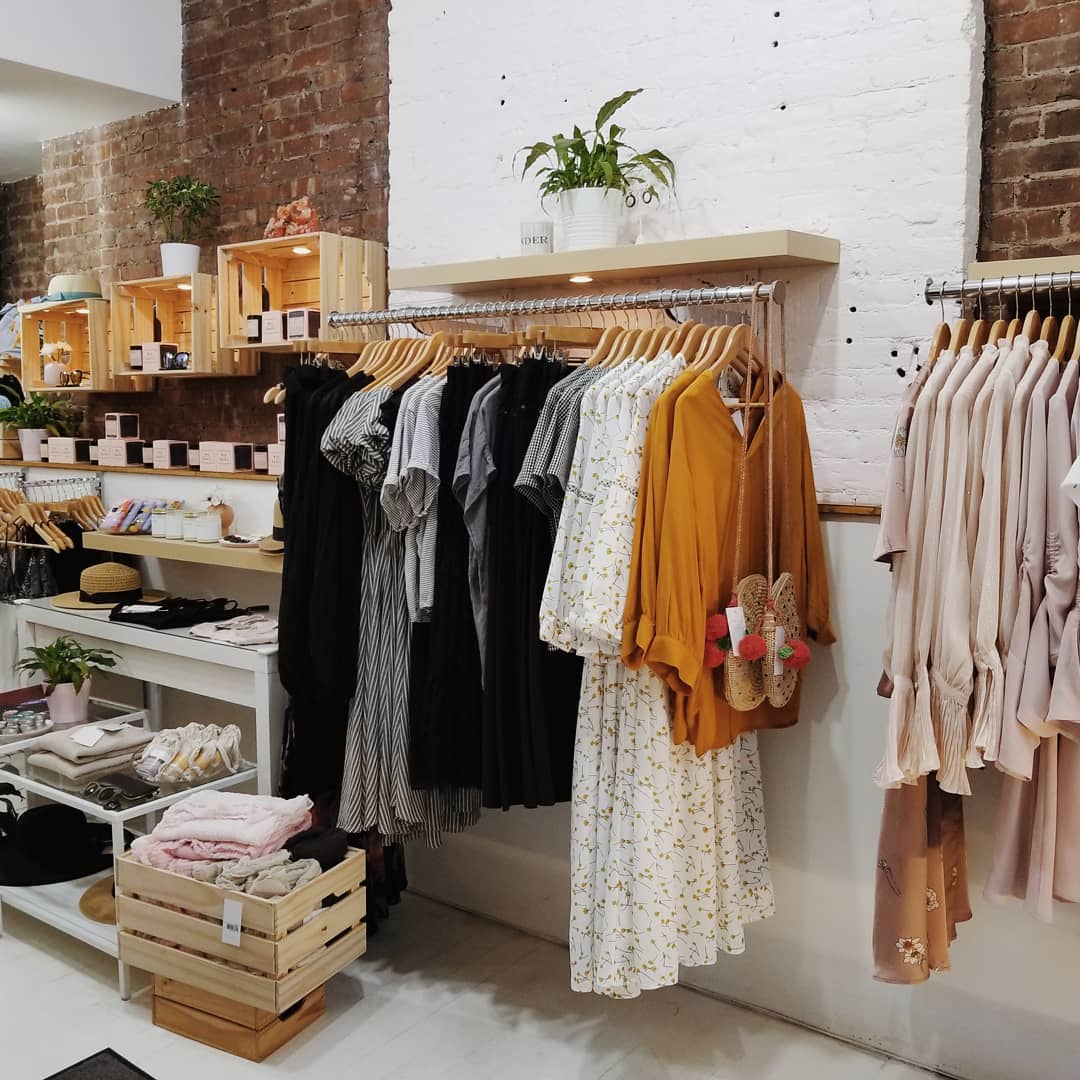The Reason Why Boutique Fashion is the Ultimate Selection for One-of-a-kind Design
The Reason Why Boutique Fashion is the Ultimate Selection for One-of-a-kind Design
Blog Article
Lasting Fashion: How Eco-Friendly Clothes Is Shaping the Future of Design
As the fashion industry faces raising scrutiny over its ecological impact, the rise of lasting style offers a promising choice that straightens style with ecological responsibility. boutique fashion. Just how does this motion truly affect the future trajectory of style, and what difficulties exist in advance in its widespread fostering?
Ingenious Sustainable Products
As the garment industry faces its environmental influence, innovative sustainable products have arised as an important service for reducing environmental footprints. Amongst the most encouraging materials are those stemmed from natural, sustainable resources, such as organic cotton, hemp, and bamboo. These products not only lower reliance on fossil gas however additionally reduce harmful chemical use and water usage. Organic cotton, for example, utilizes dramatically less water than traditional cotton and eliminates the requirement for poisonous chemicals, thus maintaining soil health and wellness and biodiversity.
Along with plant-based materials, improvements in biofabrication have actually brought about the development of lab-grown fabrics. Mycelium natural leather, originated from mushroom roots, presents a flexible and naturally degradable option to animal leather. Its production results in considerably lower carbon emissions and water use, making it an extra lasting choice for style designers seeking to align with environmentally friendly practices.
Recycled materials are also obtaining grip, with polyester made from recycled plastic containers representing a significant breakthrough. This innovation not just draws away plastic waste from garbage dumps and oceans yet likewise minimizes energy consumption contrasted to generating virgin polyester. Together, these materials emphasize the capacity for a much more sustainable apparel industry, leading the way for ecologically conscious design and manufacturing.
Eco-Conscious Manufacturing
Building on the advancements in sustainable materials, the fashion business is likewise re-evaluating its manufacturing procedures to additionally reduce ecological effect. Key strategies consist of minimizing water usage, decreasing carbon emissions, and eliminating unsafe chemicals. By adopting closed-loop systems, makers intend to reuse water and energy efficiently, substantially reducing waste. The integration of renewable resource resources, such as solar and wind power, into manufacturing centers further cuts reliance on nonrenewable fuel sources.
Another important aspect is the reduction of hazardous chemicals traditionally used in dyeing and completing fabrics. Eco-conscious manufacturers are shifting towards plant-based dyes and waterless dyeing innovations, which not just safeguard local environments yet additionally boost worker safety. Developments like digital printing minimize textile waste and power intake, offering a cleaner alternative to conventional techniques.
Additionally, openness and traceability have ended up being extremely important. With the innovation of blockchain technology, companies can now provide detailed insights right into their supply chains, making sure ecologically friendly and moral methods at each step. This openness constructs customer depend on and motivates brands to preserve high sustainability standards. As the demand for eco-conscious items expands, makers are obliged to innovate, ensuring that the future of style is both fashionable and lasting.
The Increase of Upcycling
Upcycling, a transformative practice in lasting fashion, includes creatively repurposing thrown out materials right into new, top quality items. This ingenious approach not only reduces waste however also lessens the demand for basic materials, thus decreasing the environmental influence of clothes manufacturing. By rebuilding and reimagining existing items, designers and fashion brands are able to instill originality right into their collections while advertising environmental responsibility.

Furthermore, the upcycling motion has actually encouraged independent designers and little services, who commonly lead in technology because of their dexterity and creative thinking. By profiting from the bountiful schedule of unused products, these entities add to a circular economy, demonstrating that fashion can be both elegant and sustainable. Via upcycling, the sector takes substantial strides in the direction of a more liable and aware future.
Thrift Culture's Influence
The growing second hand culture considerably improves the landscape of lasting fashion, highlighting the value of conscious consumption. This cultural shift motivates customers to welcome previously owned apparel, consequently lowering the demand for brand-new garment production and minimizing environmental effect. Thrift shopping not only expands the lifecycle of clothing however also reduces the carbon footprint associated with production, delivering, and dealing with garments.
A Discover More Here vital aspect of second hand society is its democratization of style. By supplying a wide array of designs from different eras at cost effective rates, second hand shops make style available to a more comprehensive target market. This availability fosters a feeling of individuality and creativity, as consumers mix and match distinct items to curate customized wardrobes without adding to the quick style cycle.
Furthermore, thrift society advertises circularity in vogue, aligning with the concepts of a circular economy. By recirculating garments, the cycle of waste is interfered with, and resources are preserved. This technique supports a change from a direct "take-make-dispose" version to a more lasting structure. As more developers and consumers embrace thrift culture, the apparel industry is obliged to adjust, integrating sustainable techniques to fulfill the expanding need for eco-conscious choices.

Future Trends in Fashion
Style's advancement is increasingly formed by sustainability-driven efforts and technological developments. One famous fad is the rise of digital style, where online garments can be used in augmented truth atmospheres, considerably minimizing fabric waste.
Moreover, the combination of blockchain innovation uses brand-new possibilities in openness and traceability, enabling consumers to validate the sustainability credentials of their apparel. boutique fashion. This ensures liability in supply chains and promotes honest sourcing techniques. 3D printing is yet another development that promises to revolutionize producing procedures by allowing on-demand manufacturing, therefore minimizing excess inventory and waste
Furthermore, the development of bio-fabricated materials, such as lab-grown leather and plant-based fabrics, provides sustainable alternatives to standard products. These developments decrease reliance on animal items and resource-intensive crops. As these innovations mature, useful content they are poised to transform the style landscape, merging style with sustainability. The future of style, consequently, exists in a smooth mix of innovation, advancement, browse around these guys and ecological responsibility.
Final Thought
The transformation of the garment industry through sustainable methods indicates a pivotal change in the direction of environmental responsibility. The assimilation of ingenious materials, eco-conscious production techniques, and the embracement of upcycling and second hand culture highlights a dedication to minimizing eco-friendly footprints. As these techniques obtain momentum, they redefine the market's narrative by prioritizing ethical and sustainable options. This advancement not only aligns fashion with ecological sustainability however likewise establishes a precedent for future fads concentrated on duty and advancement.
As the fashion sector faces enhancing scrutiny over its environmental influence, the surge of sustainable style provides an appealing choice that aligns style with environmental duty.As the fashion sector grapples with its ecological impact, ingenious lasting products have actually arised as an important remedy for reducing ecological footprints. Together, these products highlight the possibility for an extra lasting style sector, leading the way for environmentally conscious style and production.
Building on the advancements in lasting products, the style sector is additionally re-evaluating its production procedures to additionally lower environmental impact. boutique fashion.Upcycling, a transformative practice in sustainable fashion, involves artistically repurposing thrown out products right into new, top notch items
Report this page